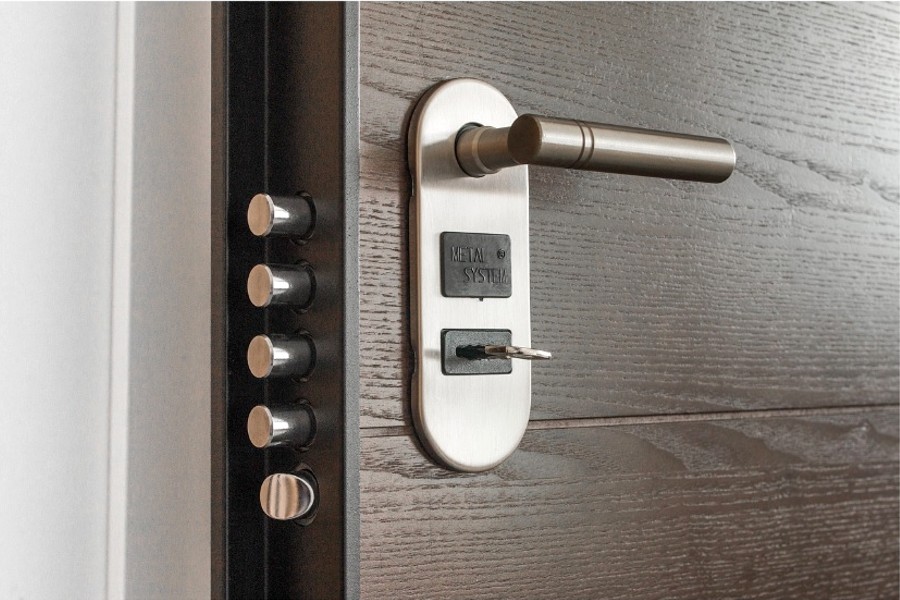
Locks have been an essential part of human civilization for thousands of years, evolving from simple mechanical devices to sophisticated security systems.
This journey through time not only reflects the advancements in technology but also the growing need for security and privacy. In this article, we explore the fascinating history and evolution of locks, from ancient times to the modern era, and how they have shaped our approach to security.
Ancient Locks: The Beginning
The earliest known locks date back to ancient Egypt and Mesopotamia, around 4000 years ago. These early locks were made of wood and used a simple pin tumbler mechanism, which relied on a wooden key to lift pins and allow the bolt to move. This design was revolutionary for its time, providing a basic level of security for homes and valuables.
In ancient Rome, metal locks began to emerge, marking a significant advancement in lock technology. Roman locks were more durable and complex, often featuring wards and levers that required a specific key shape to operate. These locks were not only functional but also served as a status symbol, indicating wealth and importance.
Medieval Innovations: The Rise of Metal Locks
During the medieval period, locks continued to evolve, with blacksmiths creating intricate iron locks and keys. The introduction of the warded lock became popular in Europe. These locks had a series of wards or obstructions inside the lock, which could only be navigated by the correct key. This design provided better security, as it was more difficult for unauthorized users to manipulate.
By the 18th century, the invention of the lever tumbler lock further improved security. This lock mechanism used levers that had to be lifted to a specific height by the key to unlock the door. The more levers in the lock, the more secure it was. These locks were widely used in safes and secure rooms, offering a higher level of protection against tampering.
The Industrial Revolution: A New Era of Locks
The Industrial Revolution brought about significant changes in lock technology, with the mass production of locks becoming possible. In the 19th century, American inventor Linus Yale Sr. developed the modern pin tumbler lock, which remains the foundation of many locks used today. His son, Linus Yale Jr., improved upon this design and invented the cylinder lock, which became a staple in residential and commercial security.
Another notable advancement was the creation of the combination lock by James Sargent. This lock used a rotating dial with a set sequence of numbers to unlock, eliminating the need for a key. Combination locks became popular for safes and vaults, providing a reliable method for securing valuable items.
Modern Locks: The Digital Age
The 20th and 21st centuries have seen rapid advancements in lock technology, with the introduction of electronic and smart locks. These modern locks use digital technology to provide enhanced security features, such as keyless entry, remote access, and biometric recognition. Smart locks, in particular, have revolutionized home security, allowing homeowners to control their locks via smartphones and integrate them with other smart home devices.
The use of smart locks is becoming increasingly common in residential and commercial settings, offering convenience and security. For those interested in exploring the latest in lock technology, benslocksmithservices.com offers a comprehensive range of modern locking solutions and professional installation services.
The Future of Locks
As technology continues to advance, the future of locks looks promising. Innovations such as blockchain technology, quantum cryptography, and advanced biometric systems are expected to further enhance security and privacy. These technologies aim to provide even more secure and tamper-proof solutions, making unauthorized access increasingly difficult.
In addition to security, future locks may also focus on sustainability and energy efficiency. As smart home technology evolves, locks that integrate with renewable energy systems and smart grids could become standard. The ongoing development of new materials and manufacturing techniques will also play a crucial role in the evolution of locks, ensuring they remain durable and effective.
Conclusion
The evolution of locks is a testament to human ingenuity and the ongoing quest for security. From simple wooden devices to sophisticated electronic systems, locks have come a long way. As we look to the future, the continued advancement of lock technology promises to bring even greater security and convenience. For more information on the latest lock technologies and services, visit benslocksmithservices.com.
Become a Harlem Insider!
By submitting this form, you are consenting to receive marketing emails from: . You can revoke your consent to receive emails at any time by using the SafeUnsubscribe® link, found at the bottom of every email. Emails are serviced by Constant Contact








